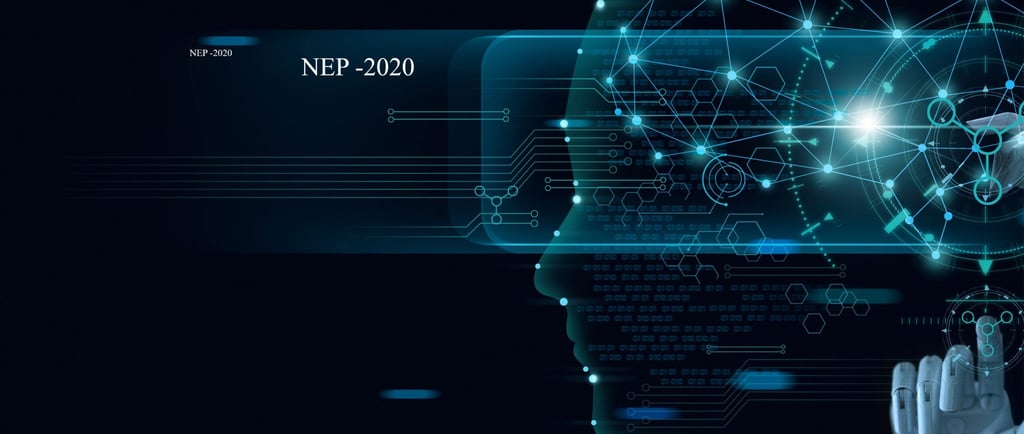From Coding to Core Concepts: Why Elon Musk, Jensen Huang, and India’s New Education Policy Urge Students to Master Physics, Mathematics, and Scientific Thinking in the Age of AI
In a world where AI can now write code, debug software, and even build apps autonomously, what skills will truly set you apart? This thought-provoking post explores how tech visionaries like Elon Musk and NVIDIA CEO Jensen Huang are urging students to move beyond just coding and focus on mastering core disciplines like physics, mathematics, and scientific reasoning. Tied closely with India’s visionary National Education Policy (NEP) 2020, this blog breaks down how Indian students can future-proof their careers by embracing deep conceptual learning, multidisciplinary thinking, and a problem-solving mindset. From SpaceX to ISRO, the innovators of tomorrow aren’t just programmers—they’re creators, scientists, and system thinkers. Whether you're a student, parent, or educator, this post is your guide to navigating the AI revolution with purpose and clarity. Learn why physics and maths are your “AI-proof” skills—and how NEP 2020 is the launchpad for India’s next generation of global innovators.
KARMANYA GURUTVAM TEAM
8/12/20253 min read


From Coding to Core Concepts: Why Elon Musk, Jensen Huang, and India’s New Education Policy Urge Students to Master Physics, Mathematics, and Scientific Thinking in the Age of AI
In an era where Artificial Intelligence (AI) is transforming industries at lightning speed, two of the world’s most influential tech leaders—Elon Musk (Tesla, SpaceX) and Jensen Huang (CEO of NVIDIA)—are calling for a radical shift in how students prepare for the future.
Their advice?
"Stop treating coding as the ultimate skill. Start mastering physics, mathematics, and the scientific principles that explain how the universe works."
Why This Message Matters in 2025
Just a decade ago, coding was the gold standard for tech careers. But today, AI can write, debug, and even optimise code faster than most human programmers.
AI tools like ChatGPT, GitHub Copilot, and automated code generators are lowering the barrier to software development.
What’s becoming scarce is human conceptual depth—the ability to imagine, analyse, and solve complex real-world problems.
If machines can already code, your value lies in knowing what problems to solve and how the real world operates—whether in energy, biology, space, or economics.
The NEP 2020: India’s Game-Changing Opportunity
India’s New Education Policy 2020 (NEP 2020) is designed for exactly this kind of shift. It moves education away from rote memorisation toward conceptual understanding, multidisciplinary learning, and creativity.
Key NEP Highlights for Future-Ready Students:
Foundational Strength – Build strong basics in mathematics, science, and reasoning from early classes.
Interdisciplinary Learning – Combine physics with economics, AI with biology, or engineering with humanities.
Hands-On Projects – Move from theory to practical experimentation.
Flexible Curriculum Choices – Create your own learning path.
Tech Integration – Use AI, AR/VR, and simulation tools to explore ideas, not just consume content.
Why Physics & Mathematics Are “Future-Proof” Skills
Physics builds understanding of the world—energy, motion, forces, and systems.
Mathematics is the universal language of precision and problem-solving.
Together, they are the foundation for cutting-edge careers in:
Quantum Computing
Space Exploration
Nanotechnology
Autonomous Vehicles
Smart Energy Systems
From Writing Code to Designing the Future
Think of AI as your co-pilot, not your competitor. The real question is: What will you ask your AI to build?
SpaceX uses advanced orbital mechanics, propulsion science, and material engineering—not just programming.
NVIDIA excels through semiconductor physics and mathematical modelling.
ISRO achieves planetary missions using precision mathematics and applied physics—AI supports the work, but human creativity drives it.
Action Steps for Students in the AI Age
1. Master the Fundamentals
Focus on strong basics in algebra, calculus, classical mechanics, and computer logic.
2. Learn by Building
Join science fairs, robotics clubs, coding hackathons, or physics Olympiads.
3. Mix Disciplines
Pair technical subjects with humanities or business—innovation often happens at the intersection.
4. Stay Curious
Follow ISRO missions, climate science developments, and AI research.
5. Work on Real-World Problems
Try projects on clean energy, space tech, or AI for healthcare.
Real Indian Success Stories
1. ISRO’s Chandrayaan-3
In 2023, India became the first country to land near the Moon’s south pole. The success came from years of mastery in orbital mechanics, propulsion physics, and precision maths, led by dedicated scientists.
2. Aaryan Santosh – Young Innovator
At just 16, Aaryan developed a low-cost device to detect pesticide residue in vegetables using AI + Chemistry fundamentals—a project now supported by incubation centres.
3. Dr. Tessy Thomas – “Missile Woman of India”
A key scientist behind India’s Agni missile program, she combined deep aerodynamics knowledge with leadership to put India at the forefront of defense tech.
4. Team Avishkar Hyperloop (IIT Madras)
Students are building India’s first indigenous Hyperloop prototype, applying fluid dynamics, electromagnetics, and material science—exactly the kind of cross-disciplinary thinking Musk and Huang promote.
Message to Indian Students
You’re entering a future where AI will be everywhere. The difference between being employable and being an innovator will come down to how deeply you understand science and how creatively you apply it.
Final Thought:
In the age of algorithms, don’t just learn to talk to machines. Learn how the universe works so you can teach machines something truly new. That’s how India will go from an IT service hub to a global innovation leader.
Empowering Education, Transforming Lives
info@karmanyagurutvam.com